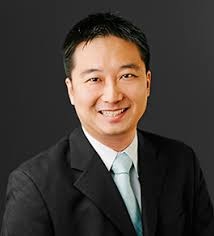Two-dimensional (2D) transition metal dichalcogenides (TMDs) nanomaterials such as molybdenite (MoS2), which possess a similar structure as graphene, have been donned the materials of the future for their wide range of potential applications in biomedicine, sensors, catalysts, photodetectors and energy storage devices.

The smaller counterpart of 2D TMDs, also known as TMD quantum dots (QDs) further accentuate the optical and electronic properties of TMDs, and are highly exploitable for catalytic and biomedical applications. However, TMD QDs is hardly used in applications as the synthesis of TMD QDs remains challenging.
Now, engineers from the National University of Singapore (NUS) have developed a cost-effective and scalable strategy to synthesize TMD QDs. The new strategy also allows the properties of TMD QDs to be engineered specifically for different applications, thereby making a leap forward in helping to realize the potential of TMD QDs.
Bottom-up strategy to synthesize TMD QDs
Current synthesis of TMD nanomaterials rely on a top-down approach where TMD mineral ores are collected and broken down from millimeter to nanometer scale via physical or chemical means. This method, while effective in synthesizing TMD nanomaterials with precision, is low in scalability and costly as separating the fragments of nanomaterials by size requires multiple purification processes. Using the same method to produce TMD QDs of a consistent size is also extremely difficult due to their minute size.
To overcome this challenge, a team of engineers from the Department of Chemical and Biomolecular Engineering at NUS Faculty of Engineering developed a novel bottom-up synthesis strategy that can consistently construct TMD QDs of a specific size, a cheaper and more scalable method than the conventional top-down approach. The TMD QDs are synthesized by reacting transition metal oxides or chlorides with chalogen precursors under mild aqueous and room temperature conditions. Using the bottom-up approach, the team successfully synthesized a small library of seven TMD QDs and were able to alter their electronic and optical properties accordingly.
 Associate Professor David Leong from the Department of Chemical and Biomolecular Engineering at NUS Faculty of Engineering led the development of this new synthesis method. He explained, “Using the bottom-up approach to synthesize TMD QDs is like constructing a building from scratch using concrete, steel and glass component; it gives us full control over the design and features of the building. Similarly, this bottom-up approach allows us to vary the ratio of transition metal ions and chalcogen ions in the reaction to synthesize the TMD QDs with the properties we desire. In addition, through our bottom-up approach, we are able to synthesize new TMD QDs that are not found naturally. They may have new properties that can lead to newer applications.”
Associate Professor David Leong from the Department of Chemical and Biomolecular Engineering at NUS Faculty of Engineering led the development of this new synthesis method. He explained, “Using the bottom-up approach to synthesize TMD QDs is like constructing a building from scratch using concrete, steel and glass component; it gives us full control over the design and features of the building. Similarly, this bottom-up approach allows us to vary the ratio of transition metal ions and chalcogen ions in the reaction to synthesize the TMD QDs with the properties we desire. In addition, through our bottom-up approach, we are able to synthesize new TMD QDs that are not found naturally. They may have new properties that can lead to newer applications.”
Applying TMD QDs in cancer therapy and beyond
The team of NUS engineers then synthesized MoS2 QDs to demonstrate proof-of-concept biomedical applications. Through their experiments, the team showed that the defect properties of MoS2 QDs can be engineered with precision using the bottom-up approach to generate varying levels of oxidative stress, and can therefore be used for photodynamic therapy, an emerging cancer therapy.
“Photodynamic therapy currently utilizes photosensitive organic compounds that produce oxidative stress to kill cancer cells. These organic compounds can remain in the body for a few days and patients receiving this kind of photodynamic therapy are advised against unnecessary exposure to bright light. TMD QDs such as MoS2 QDs may offer a safer alternative to these organic compounds as some transition metals like Mo are themselves essential minerals and can be quickly metabolized after the photodynamic treatment. We will conduct further tests to verify this.” Assoc Prof Leong added.
The potential of TMD QDs, however, goes far beyond just biomedical applications. Moving forward, the team is working on expanding its library of TMD QDs using the bottom-up strategy, and to optimize them for other applications such as the next generation TV and electronic device screens, advanced electronics components and even solar cells.